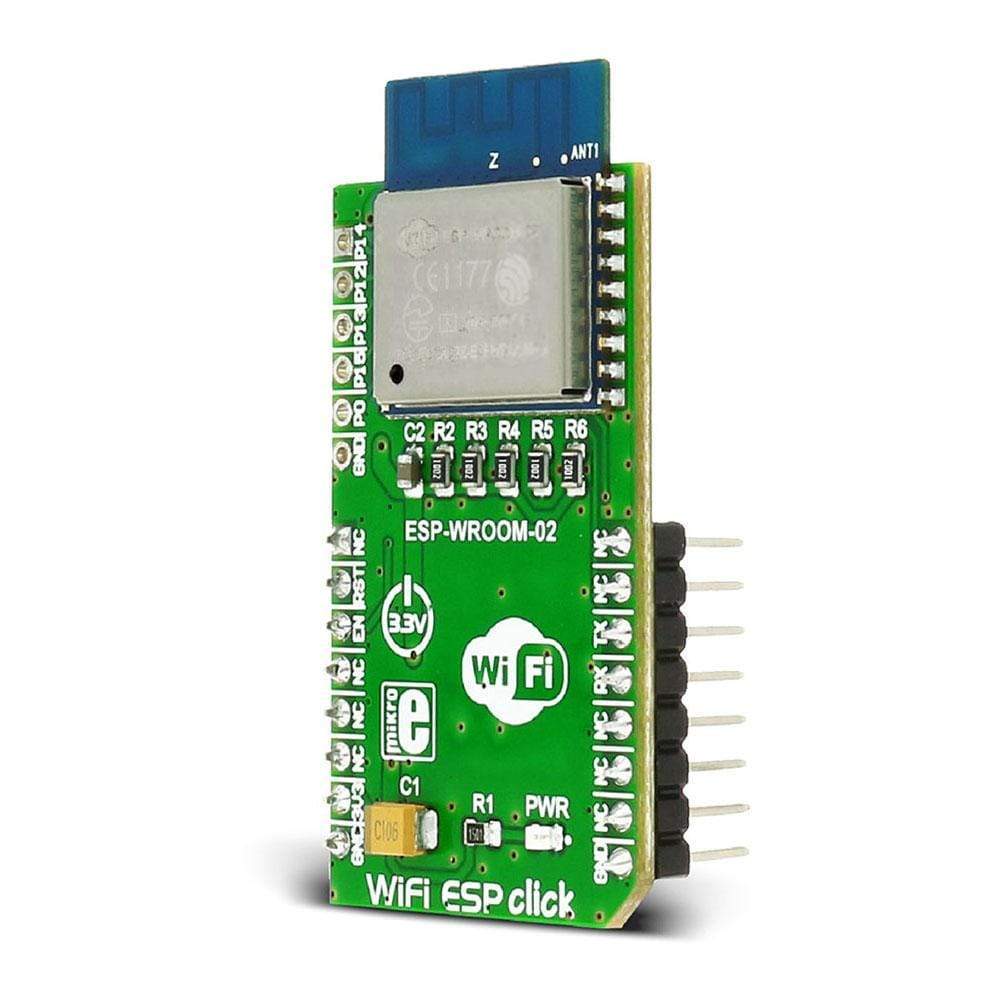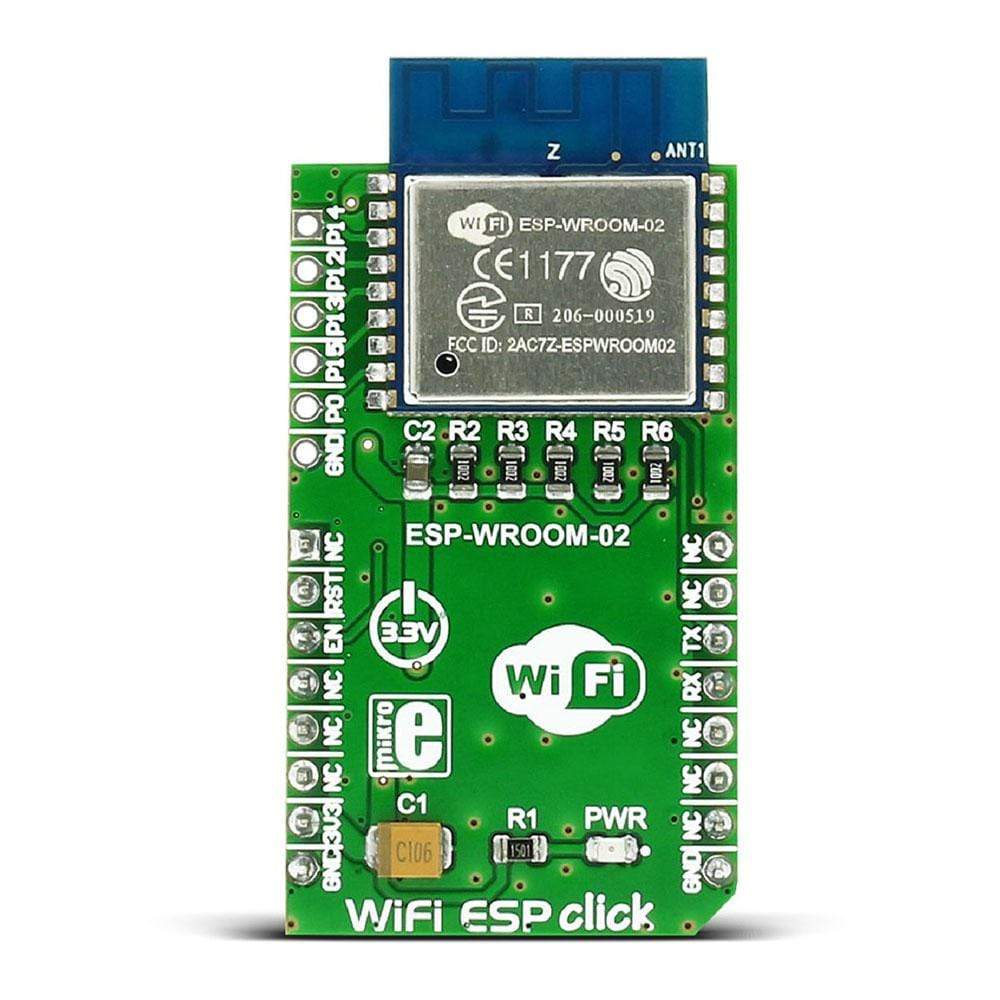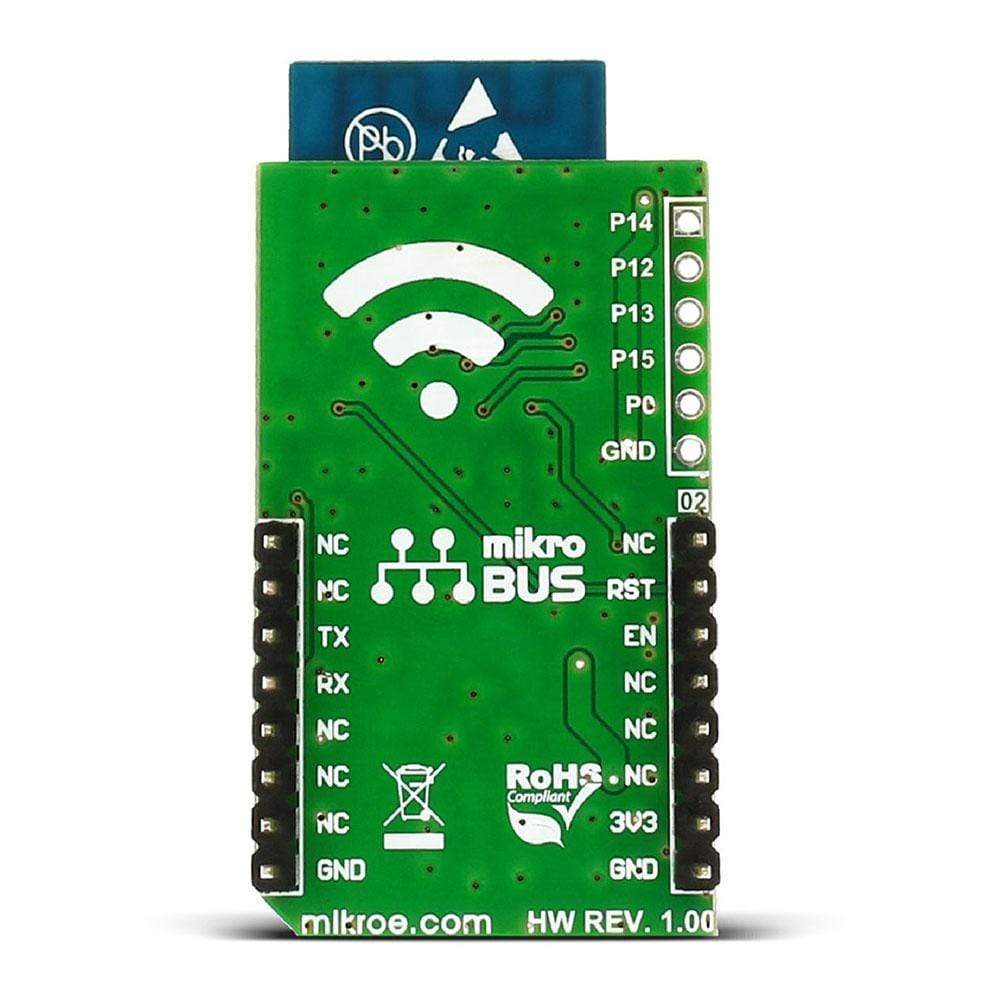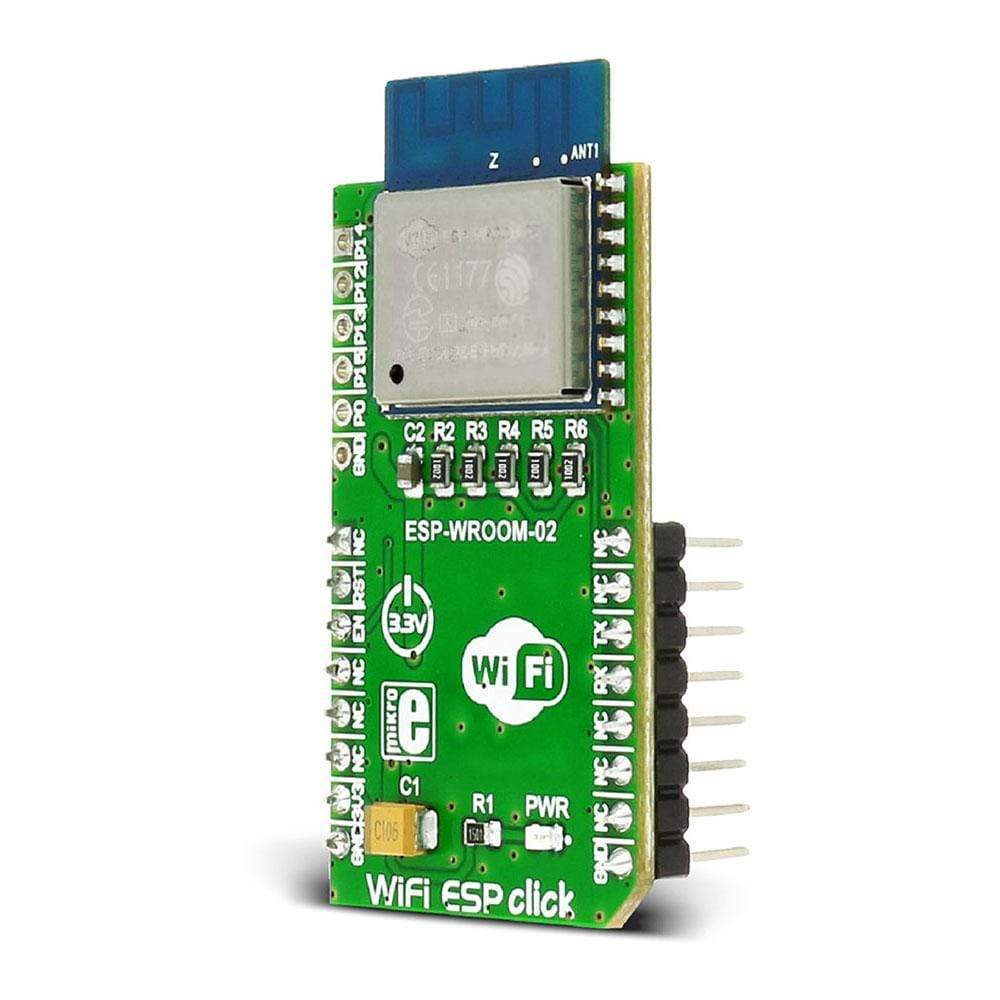
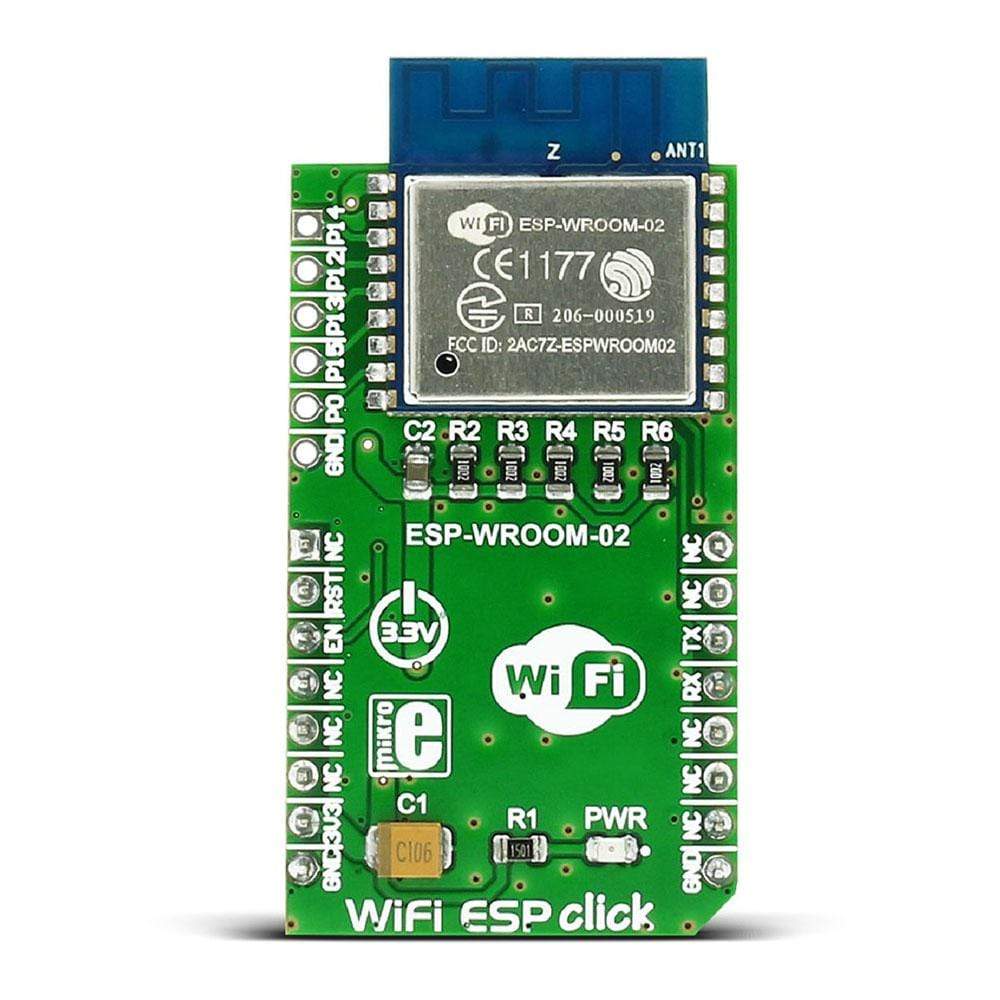
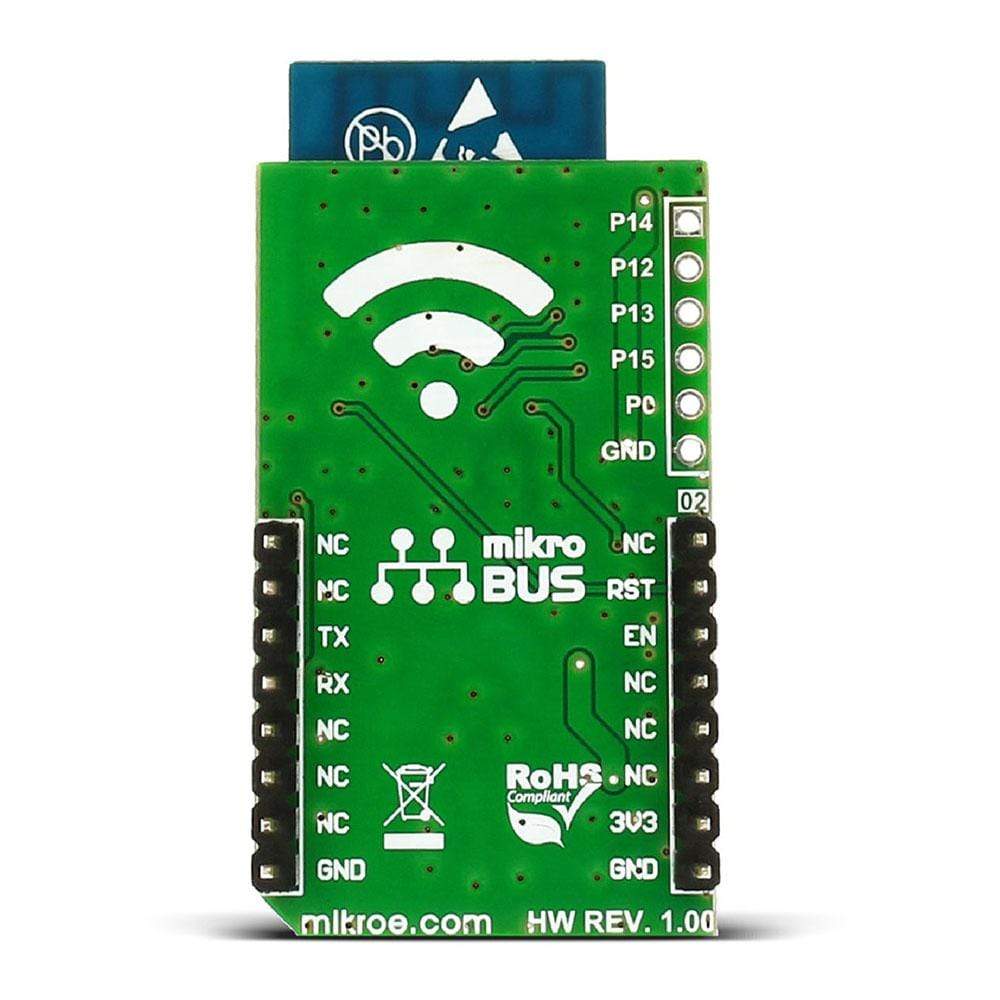
Overview
The WiFi ESP Click Board™ carries the ESP-WROOM-02 module that is based on the ESP8266EX.
The WiFi ESP Click Board™ is designed to run on a 3.3V power supply. It communicates with the target microcontroller over UART interface and the following MikroBUS signals: RST, CS.
Downloads
La carte WiFi ESP Click Board™ embarque le module ESP-WROOM-02 basé sur l'ESP8266EX.
La carte WiFi ESP Click Board™ est conçue pour fonctionner sur une alimentation de 3,3 V. Elle communique avec le microcontrôleur cible via l'interface UART et les signaux MikroBUS suivants : RST, CS.
| General Information | |
|---|---|
Part Number (SKU) |
MIKROE-2542
|
Manufacturer |
|
| Physical and Mechanical | |
Weight |
0.019 kg
|
| Other | |
Country of Origin |
|
HS Code Customs Tariff code
|
|
EAN |
8606018710164
|
Warranty |
|
Frequently Asked Questions
Have a Question?
Be the first to ask a question about this.

